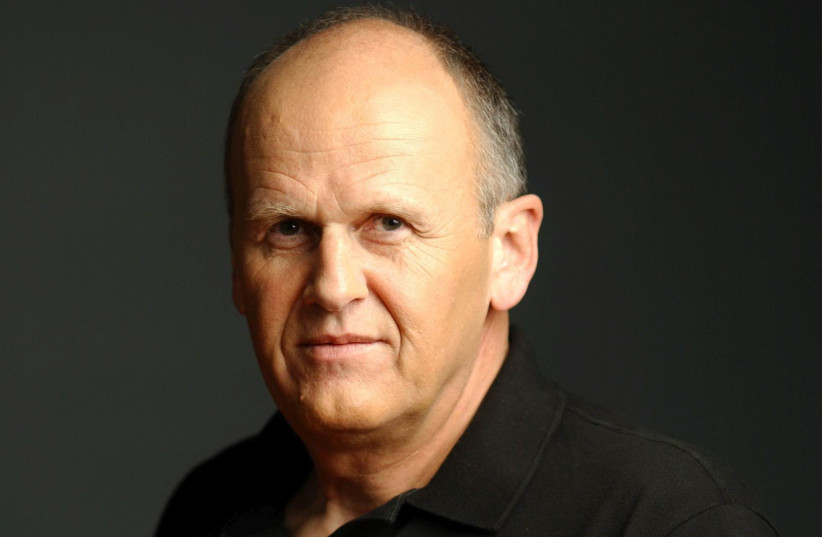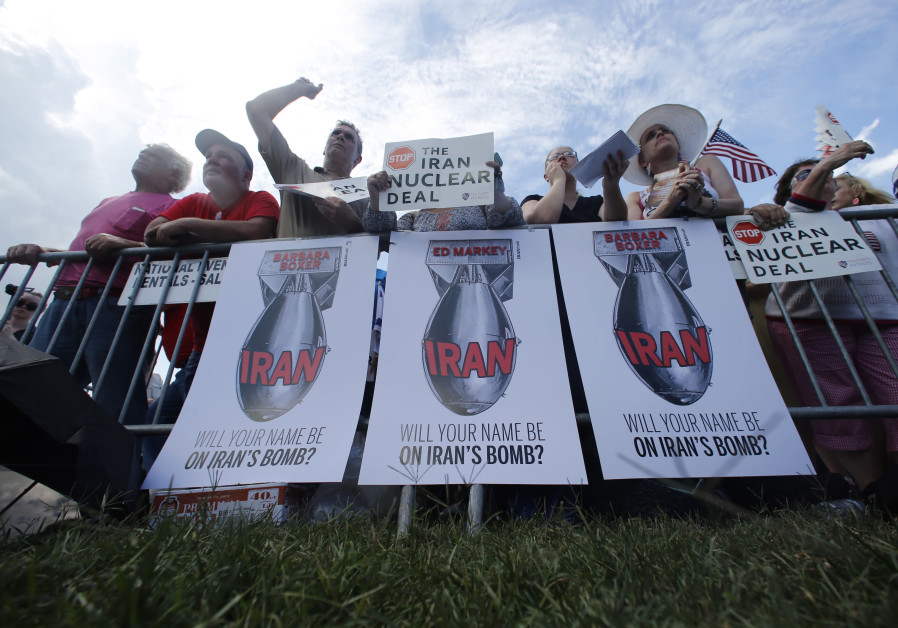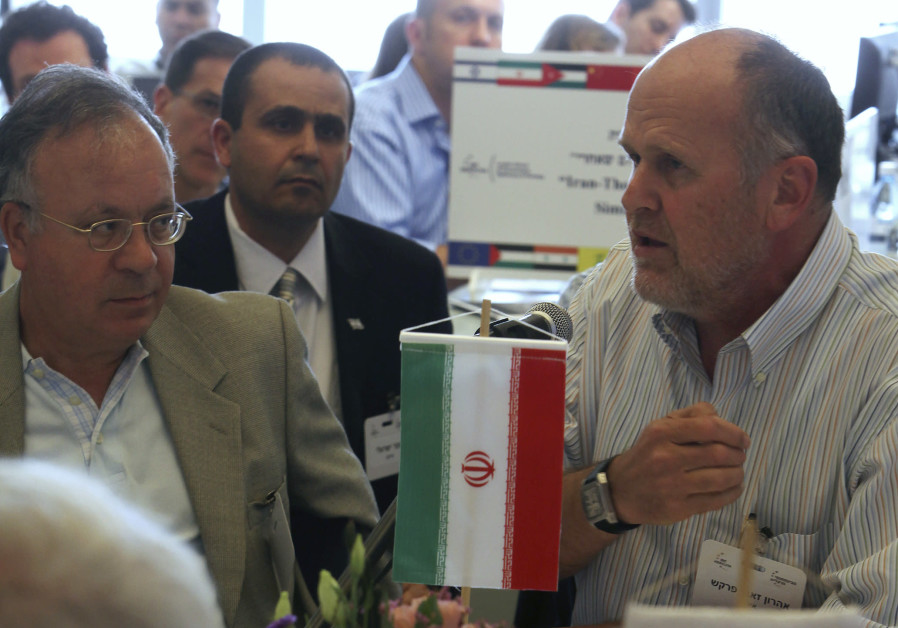 Obóz zagłady w Sobiborze działał od maja 1942 do października 1943 r. Historycy szacują, że życie straciło w nim około 180 tys. Żydów (Fot. domena publiczna)
Obóz zagłady w Sobiborze działał od maja 1942 do października 1943 r. Historycy szacują, że życie straciło w nim około 180 tys. Żydów (Fot. domena publiczna)
 Dowództwo podziemia nie chciało atakować transportów śmierci i obozów zagłady
Dowództwo podziemia nie chciało atakować transportów śmierci i obozów zagłady
Piotr Głuchowski
Kurier AK napisał w raporcie, że setki tysięcy Żydów idzie na rzeź, nic nie robiąc. Zapomniał dodać, że AK też nic nie robi. Bo Żydzi już wypadli ze strefy zobowiązań Państwa Podziemnego. Smutne – mówi Michał Wójcik. autor książki “Zemsta. Zapomniane powstania w obozach zagłady”.
.
Piotr Głuchowski: Pamięta pan, ilu było rycerzy zakonnych w państwie krzyżackim?
Michał Wójcik: Na początku kilku, potem kilkudziesięciu. Za Ulricha von Jungingena już 700.
Nie budowali zamków, dźwigając cegły, nie utwardzali osobiście dróg. Dali know-how i w kilkadziesiąt lat stworzyli państwo z niczego. W Treblince służyło…
– Czterdziestu, w porywach sześćdziesięciu esesmanów. Zamordowali ponad 900 tys. ludzi.
W dużej mierze rękami innych ofiar. Żydowski policjant łapał współplemieńca w warszawskim getcie, prowadził na Umschlagplatz, tam inni żydowscy policjanci wpychali go do wagonu, polscy kolejarze dostarczali do Treblinki. W obozie zagłady żydowski kapo z lagą w ręce popędzał do komory, Ukrainiec wpuszczał spaliny, po zagazowaniu Żydzi z Sonderkommando wyrywali złote zęby. Dziś dr Ewa Kurek mówi o żydowskich współsprawcach i żydowskich zbrodniach. Ma to sens?
– Nie ma. W armii Aleksandra Macedońskiego, która podbiła Wschód, było tylko kilka procent Macedończyków. Ale to była ich armia. Holocaust przeprowadzili Niemcy hitlerowcy, wysługując się różnymi narodami. Fabryki zagłady obsługiwali żydowscy niewolnicy. Ordynansi esesmanów, czyli Hofjuden, palacze zwłok – Heizerjuden, odzyskiwacze złota – Goldjuden, i tak dalej. To nie było współsprawstwo, oni byli ofiarami.
Gdyby Hans Memling malował piekło po Zagładzie, mógłby namalować nie diabły wrzucające grzeszników do ognia, ale potępionych, którzy torturują się nawzajem pod czujnym szatańskim okiem.
– Diabelski pomysł przeprowadzenia Zagłady w taki sposób był cywilizacyjnym skokiem w dziedzinie eksterminacji. Niewielka grupa dobrze zarządzanych i odpowiednio wytrenowanych czy nawet wytresowanych sprawców likwiduje rzesze ludzi dzięki niespotykanej w dziejach technice i organizacji. O imperium Azteków mawia się, że upadło w efekcie zdjęcia czapki, a właściwie hełmu. Hiszpanie odkręcali sobie głowy i żyli dalej! Albo zsiadali z konia i w ten sposób jedna straszna istota zamieniała się w dwie. Wiadomość o najeźdźcach robiących takie cuda, porównywalna z zaćmieniami Słońca, przerażała, mroziła i czyniła Indian z góry przegranymi. A też jej nie dowierzano. Tak, jak przez całą wojnę nie wierzono w Zagładę.
Jest taka scena w „Zemście”: esesman Wolf muzykuje sobie w 1944 r. z członkami obozowej orkiestry w Birkenau i któryś z Żydów pyta go, czy Niemcy wygrają wojnę. On odpowiada: „Oczywiście, że nie”. A zatem – mówią dalej Żydzi – świat dowie się o waszych zbrodniach tutaj popełnianych. Odpowiedź Wolfa: „Genialność pomysłu Führera polega na tym, że nikt w to nie uwierzy”.
– Aż do lat 60. światowa opina publiczna nie wierzyła w rozmiar Zagłady. Że to poszło tak łatwo. A co dopiero mówić o czasach wojny! Z Auschwitz-Birkenau uciekło około 700-800 osób. Konspiratorzy z Sobiboru i Treblinki wysyłali emisariuszy do sztetli. Mieli ostrzegać: nie dajcie się zapakować do wagonów! Nie słuchano ich ostrzeżeń. Czesi wykradli nawet z Auschwitz niemieckie dokumenty świadczące o tym, co tam się dzieje. Nikt im nie chciał wierzyć. Raporty podziemia szły do Londynu i Waszyngtonu, tam jakiś analityk czytał, że zagazowano 100 tys. ludzi… widział litery, ale nie rozumiał. Tak jak Aztekowie nie rozumieli, że jeździec to człowiek na zwierzęciu, a nie centaur. Co to ma znaczyć, że Niemcy gazują Żydów?
Napadają na sztetle i puszczają gazy, jak pod Ypres?
– No właśnie! Ci, którzy czytali raporty, nie rozumieli lektury.
A niekiedy nie chcieli rozumieć. Mieli inne problemy, trwała wojna, każdy miał w niej co innego do ugrania. W przypadku Państwa Podziemnego to był problem: jak ocalić Polskę i polskość po wejściu Sowietów? Nie było miejsca na troskę o Żydów.
– O obywateli polskich, przypomnijmy. Wyznania mojżeszowego. Od 1940 r. powoli wyrzuca się ich poza polską klamrę. Wypycha poza obszar zainteresowania. To już nie nasi obywatele. Nikt tego nie zadekretował, lecz tak się po prostu stało.
No, ale przecież był rotmistrz Witold Pilecki, który poszedł do Auschwitz na ochotnika, żeby alarmować świat o tym, co tam się wyprawia.
– Poszedł tam na rozkaz, bo dowództwo chciało się go pozbyć z Warszawy. Słynny raport tego „ochotnika bez ochoty” to sensacyjna chłopacka gawęda, a nie żaden alarm. On pisał epopeję o sobie – dzielnym rycerzu w misji do piekła. Raportował, jak to Polacy wodzą Niemców za nos w Auschwitz. Jak zamontowali antenę w kominie i wysyłali wieści do Londynu. Jak polski więzień-konspirator stanął przed wizytującym Auschwitz Himmlerem i zaśmiał mu się w nos. Takie bajki.
Gdybym miał pisać scenariusz filmu, bohaterem nie czyniłbym Pileckiego, ale PPS-owca Józefa Cyrankiewicza, numer obozowy 62933, późniejszego premiera, o którym dużo pan pisze w „Zemście”. Ten wysyłał za druty kurierów z prawdziwymi wiadomościami dla kierownictwa AK: trwa niewyobrażalna zbrodnia, zróbmy coś!
– Wzywał, aby zrobić cokolwiek, bo ma to olbrzymie znaczenie moralne, „ze względu na międzynarodową wagę Auschwitz”. Zarazem nie chciał, aby akcję oswobodzenia obozu traktować wyłącznie w kategoriach pomocy więźniom. Chodziło mu o gest symboliczny.
Trzeba zaatakować obóz. I co mu podziemie odpowiada?
– Nie pali się. A potem dowódcy narzekają między sobą, że wysyłani przez Cyrankiewicza kurierzy to sami lewacy, internacjonały, dąbrowszczacy albo Żydzi. A tu jest przecież Polska.
Da się wyczytać w pana książce również taką zawoalowaną sugestię, że póki Sonderkommando wysyłało za druty złoto i diamenty, polskie podziemie markowało chęć przyjścia na pomoc i jedynie domagało się nowego złota.
– Nie dopatrywałbym się w tym jakiejś szczególnej podłości. Złoto było potrzebne, by organizować ucieczki, kryjówki, nowe dokumenty, by kupować broń. I organizować jakiś tam… może w przyszłości… atak na obóz, ale tylko na ten koncentracyjny, gdzie siedzą godni uwolnienia więźniowie polityczni. Polacy.
Co oczywiście było taką samą mrzonką jak atak na Birkenau. Ale już tory dałoby się rozkręcić, szczególnie te do Treblinki…
– …a jeszcze bardziej do Bełżca i Sobiboru. Linie kolejowe szły przez lasy opanowane przez partyzantów…
…którzy wiedzieli, dokąd wagony jadą i co zawierają, ponieważ co rusz ktoś z tych pociągów skakał.
– Mimo to ani jeden transport nie został wykolejony, choć podziemie dawało sobie radę z większymi operacjami, bardziej ryzykownymi. Rozbijało więzienia, zabijało chronionych hitlerowskich notabli. Rozumiem, że leśni nie wiedzieli, co potem z tymi ludźmi zrobić. Kobiety, dzieci… Mogliby jednak dać im jakąś szansę. To by już było coś. Stefan Sendłak, PPS-owiec i członek Żegoty, zeznawał po wojnie tak: „Młodzież żydowska idąca w tych transportach zdołałaby dotrzeć do lasu poprzez ucieczkę i niewątpliwie w jakimś dużym procencie uratowałaby swoje życie”.
A my, Polacy, bylibyśmy w XXI w. w zupełnie innej sytuacji PR-owej, gdyby Armia Krajowa, Ludowa czy też Bataliony Chłopskie robiły takie akcje, albo choćby próby.
– Sendłak pisał: „Z powodzeniem można by zatrzymać jeden czy więcej pociągów”, i nawet podawał dogodne i bezpieczne dla podziemia lokalizacje na te zasadzki kolejowe. A na koniec relacji, która leży w Żydowskim Instytucie Historycznym, wyraził zdziwienie, że niczego nie zrobiły „ani oddziały AK, ani oddziały PPR, które miały jednak obowiązek w imię haseł, by nieść pomoc bliźnim”.
Niestety, najwyższe dowództwo podziemia nie chciało atakować ani transportów śmierci, ani obozów – nawet tych małych i chronionych niewielkimi siłami.
AK-owski komendant Nowogródka, którego podkomendni rządzili w okolicznych lasach i mieli tam nawet działające lotnisko, napisał do Warszawy, że jego ludzie chętnie wyzwolą niewielki obóz koncentracyjny w Kołdyczewie pod Baranowiczami, a nawet nakręcą materiał filmowy, bo mają własną ekipę z kamerą. Pokażą w ten sposób światu Żydów i Cyganów za drutami, palenie zwłok w krematoriach… Wystarczy przysłać po ten materiał samolot. Warszawa nie była zainteresowana.
Adam Smulikowski, kurier AK, napisał w raporcie dla Londynu, że setki tysięcy Żydów są w Treblince i Bełżcu „tracone z pomocą gazów trujących i prądu elektrycznego”. I jaką refleksję z tego wysnuł na koniec? Że naród ten jest wybitnie zdegenerowany, ponieważ nie zdobywa się na żaden opór. Idzie na rzeź, nic nie robiąc. Zapomniał dodać, że AK też nic nie robi. Bo Żydzi już wypadli ze strefy zobowiązań Państwa Podziemnego. Smutne.
Pana książka jest o tym, że opór jednak był. Że nie wszyscy czekali bezczynnie na rzeź. Powstania w Treblince i Sobiborze zostały wszechstronnie opisane…
– …owszem, ja jednak cytuję nowe, nieznane źródła, na nowo czytam motywacje bohaterów. Te bunty to majstersztyki konspiracji, precyzyjne uderzenia. To nie są znane sprawy. Dziś Aleksander Peczerski…
Sowiecki jeniec, organizator powstania i masowej ucieczki z Sobiboru…
– …jest w Rosji bohaterem równym największym gierojom. Po 70 latach milczenia, czy wręcz celowego uwłaczania jego pamięci ze strony władz… dziś panuje oficjalna peczerskomania. Tymczasem z jego mało znanych wspomnień wynika, że gdy trafił do Sobiboru, poczuł, że tego nie da się objąć rozumem. To jakiś teatr. A że był w poprzednim życiu reżyserem i aktorem teatralnym, zagrał rolę dowódcy. Zagrał na tyle przekonująco, że w jego wojskowe talenty uwierzyli zarówno towarzysze czerwonoarmiści, jak i czekający na cud pozostali Żydzi. Zagrał rolę zbawiciela i wygrał. Teatr dogonił życie.
Zmierzam do tego, że i o Peczerskim, i o powstańcach z Treblinki są książki, filmy dokumentalne, a nawet fabularne. Natomiast bunt i ucieczka Żydów z Sonderkommanda Birkenau to – przynajmniej dla mnie – rzecz nowa.
– Powstanie w Auschwitz-Birkenau jest w Polsce słabo zbadane. Podobnie jak obozowy ruch oporu i tarcia wewnątrz tej konspiracji. Interesy różnych grup były często sprzeczne. Żydzi z Sonderkommanda zbuntowali się, bo nie mogli czekać, inni postanowili, że do powstania się nie przyłączą, bo istnieje szansa doczekania się Armii Czerwonej.
I rzeczywiście, powstańcy zapłacili życiem, natomiast wielu innych doczekało się wyzwolenia.
– Nie tylko buntownicy zapłacili za bunt. Śledztwo, które miało wyjaśnić, kto pomagał: jak do powstania doszło, skąd Żydzi mieli trotyl, broń i tak dalej… trwało niemal do końca istnienia obozu i pochłaniało kolejne ofiary. 24-letna Róża Robota, która organizowała kradzieże trotylu, została powieszona…
…po długich torturach, w trakcie których nikogo nie wydała…
– …6 stycznia 1945 r. A dwunastego Armia Czerwona ruszyła się z linii Wisły.
…i dwudziestego siódmego wyzwoliła obóz. Na koniec zadam pytanie naiwne: Dlaczego Niemcy nie zlikwidowali Auschwitz-Birkenau, tak jak wcześniej Bełżca, Treblinki, Sobiboru?
– Mieli plan zbombardowania obozu z przemalowanych na barwy alianckie samolotów, tzw. plan Molla…
Otto Moll był SS-Hauptscharführerem i nadzorcą krematoriów.
– …ktoś jednak za długo przytrzymał projekt, ktoś inny nie zdobył odpowiednich pieczątek. Zepsuli to, pogubili się. Nawet w hitlerowskim korpomolochu pracowały gapy.
W tym tygodniu nakładem Wydawnictwa Poznańskiego ukazuje się książka Michała Wójcika „Zemsta. Zapomniane powstania w obozach zagłady”. Autor jest historykiem i dziennikarzem, był naczelnym magazynów „Focus” i „Focus Historia”. Wraz z Emilem Maratem nagrodzony Nagrodą Historyczną tygodnika „Polityka” w 2015 r. za książkę o Stanisławie Likierniku „Made in Poland”.
Zawartość publikowanych artykułów i materiałów nie reprezentuje poglądów ani opinii Reunion’68,
ani też webmastera Blogu Reunion’68, chyba ze jest to wyraźnie zaznaczone.
Twoje uwagi, linki, własne artykuły lub wiadomości prześlij na adres:
webmaster@reunion68.com








